
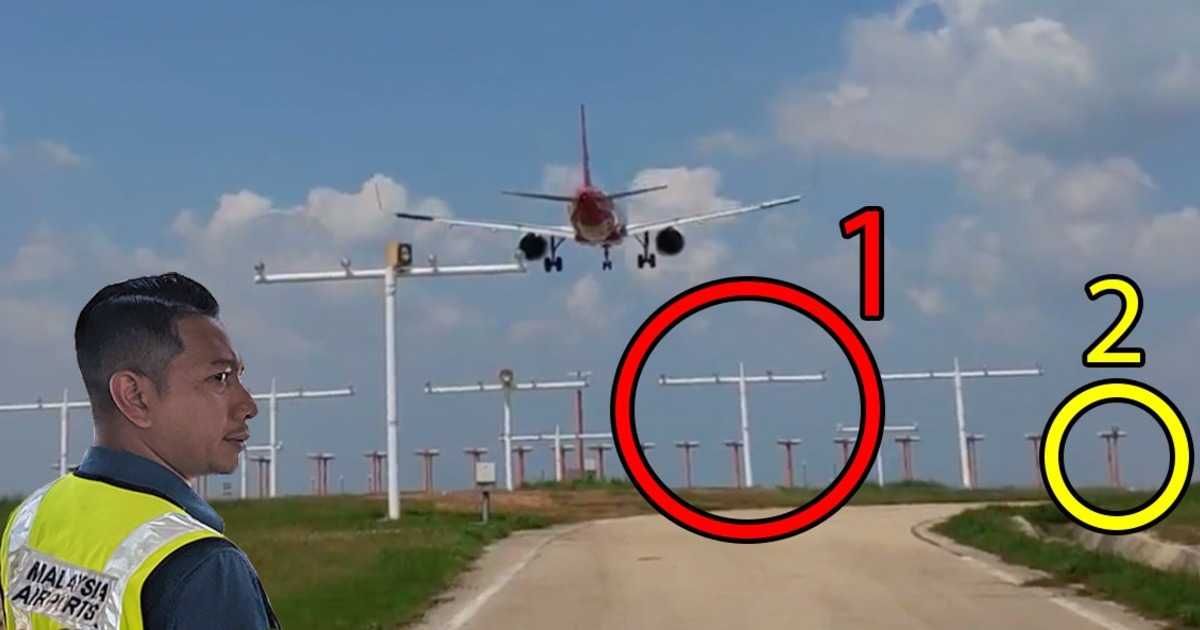
Consumer,Sponsored
5 ways KLIA secretly keeps travellers safe...that are hidden in 'plane' sight
over 5 years ago Sponsored ContentIf you were thinking of CCTVs being one of the 5 points when you clicked into this article, you’re absolutely right!
But before you close this article and accuse us of clickbait, what’s interesting isn’t the fact that KLIA has security cameras – even your local kedai runcit has them nowadays – but rather how their entire CCTV system works. What’s even more interesting is that the awesome people at Malaysia Airports Holdings Berhad, the people who run 39 airports around Malaysia, took us on a tour of KLIA and showed off all their safety and security measures (which are covered in this article)...including backstage access into their security room!
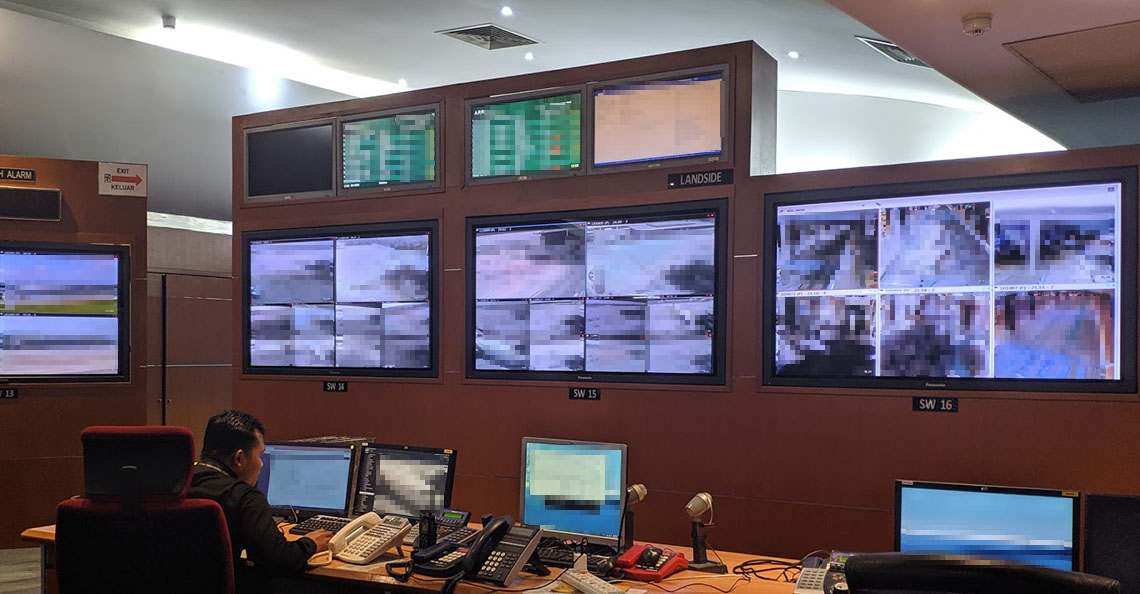
Okay so we actually got permission to take that ONE picture on the condition that we censor the screens for security reasons, but this picture only shows 28 out of 2160 CCTV units that we saw in their control room, or officially known as the Airport Operations Control Centre (AOCC).
We don’t really need to tell you how CCTVs can help in improving and ensuring security, but what we can tell you is...
1. KLIA was the first airport in the world to have a SEPARATE network for CCTVs
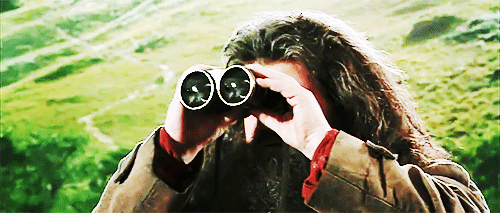
AOCC senior manager Zulkifli Sidek tells us that KLIA’s CCTV system was purposely designed to run on a separate network, so that it’ll continue to run even if the other systems at the airport experience a disruption. This may not sound like a big deal by today’s standards, but if you consider that this was all thought of in the early 90’s (construction of KLIA started in 1993) when we were still pointing at CCTVs and exclaiming “Mummy look, a camera!”… you can see why it’s considered pretty forward thinking.
This is all achieved via a linked system called the Info Broker. The Info Broker is the first linked networking system that was later introduced to airports all around the world—and it originated from our very own KLIA.
Zulkifli has two assistant managers under him and, alongside four other managers, work to ensure that someone is always on hand 24/7 if a situation arises. Basically, they have to coordinate with other agencies to not just ensure traveller safety, but also to ensure a smooth experience at the airport. Because an airport is essentially made up of different parties like Customs and Immigration (they’re not actually part of Malaysia Airports) handling different checkpoints, CCTVs give the AOCC a bird’s eye view of the airport and allows them to immediately inform these agencies if they need to open additional counters or to respond to an emergency.
2. KLIA has a radar that can detect a single grain of rice
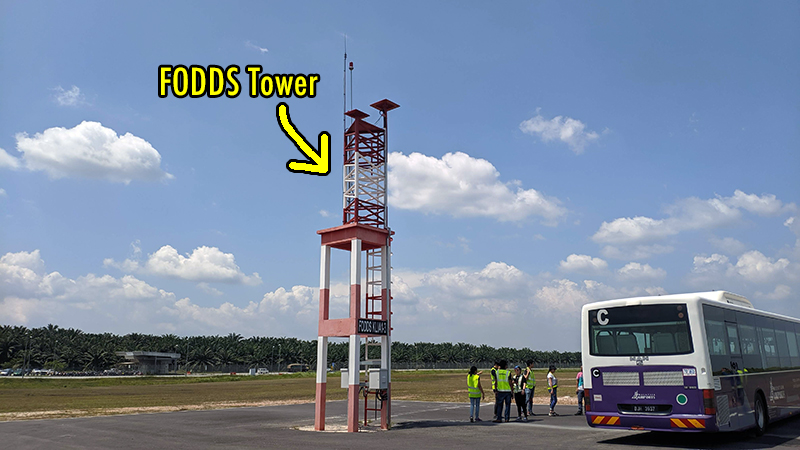
Takeoffs and landings are the most crucial part of the flying process, and A LOT of technology and effort goes into making sure these crucial stages take off (pun intended) without a hitch. An important part of this process is the runway itself.
Runways have to be completely free of debris, as something as small as a loose stone can damage the aircraft, causing bent/broken fan blades, engine failure, fires, wing damage, and even a puncture on plane tires... and that’s what Malaysia Airports says is the least severe. The worst thing a loose stone can cause is an aircraft accident. Any airport around the world keeps runways clean through regular runway inspections (where the debris would be picked up by hand) or through a runway sweeper machine that, well, sweeps the runway. At KLIA, runway inspections are conducted at least 4 times a day.
But KLIA has something that allows them to detect and remove debris the moment it ends up on the runway, and it’s called a ‘High-precision foreign object debris detection system’ (FODDS). Using something called linear cell radar technology, the 6 towers constantly scan Runway 2 (it’s not available on all runways yet) for foreign objects as small as a grain of rice. What surprised us about the towers was that they were shorter than we imagined, and situated pretty far from the runway – about 200 meters by our estimate. KLIA is the first airport in the world to use the commercialized version of FODDS, which was first developed in Japan.
There’s also another feature that you’d always see, but probably never thought twice about – the blinking lights on the runway. This is what they actually look like at ground level
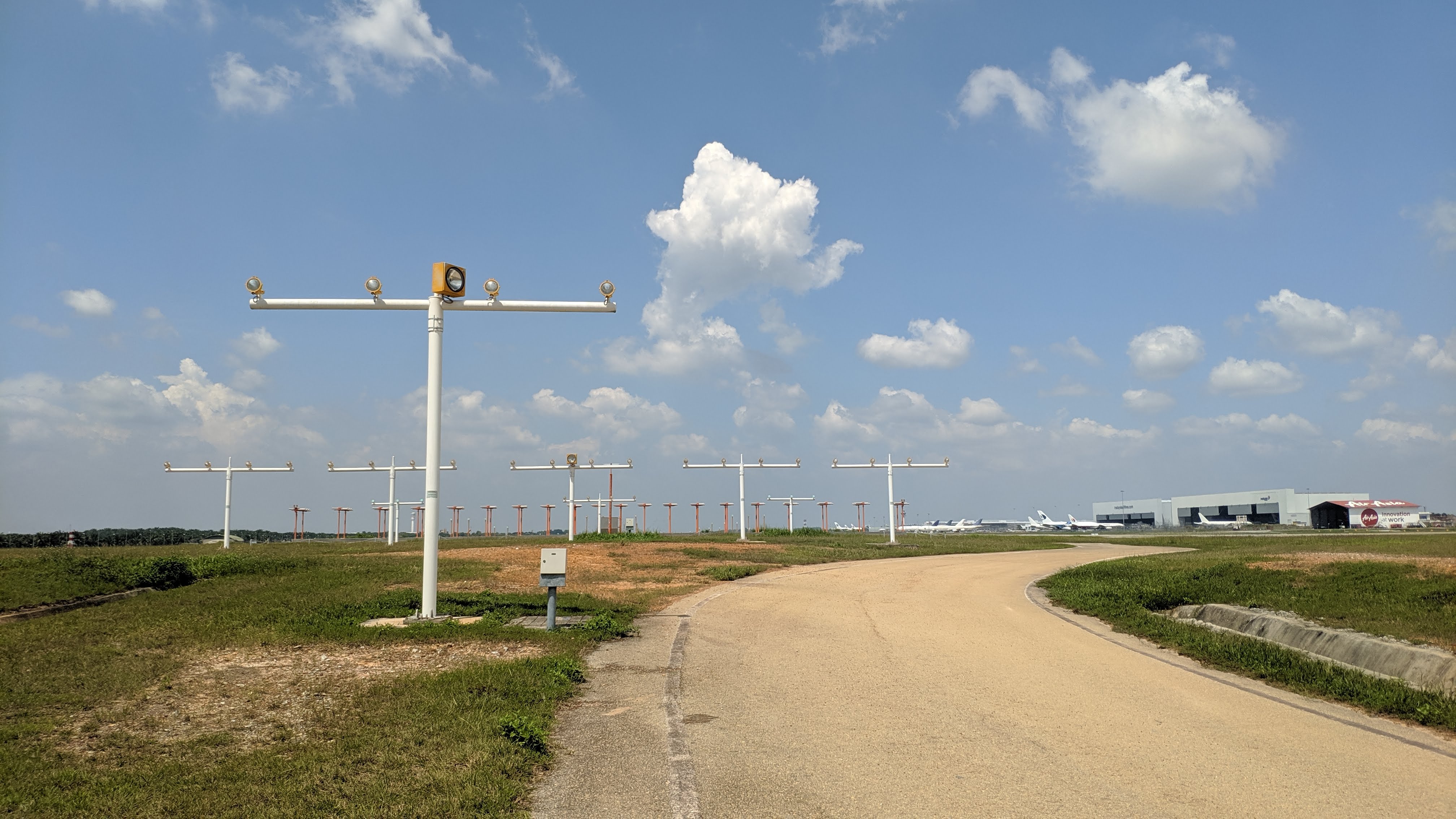
These are called Aeronautical Ground Lightings (AGL), and are used somewhat like a visual aid by pilots during landing and takeoff. These lights are able to blink in specific patterns and colors to relay visual signals to pilots because, without AGLs, pilots may not be able to see the runway or identify the runway they’re supposed to use – especially at nighttime or bad weather.
There is also an additional safety operation called the Instrumented Landing System (ILS) which uses radio signals to help pilots with the alignment and landing of the aircraft. If you look at the picture closely, the orange pillars behind aren’t lights, but transmitters used to receive and send flight data from the plane.
Aside from the AGLs, there’s another familiar safety feature that you probably never gave a second thought about:
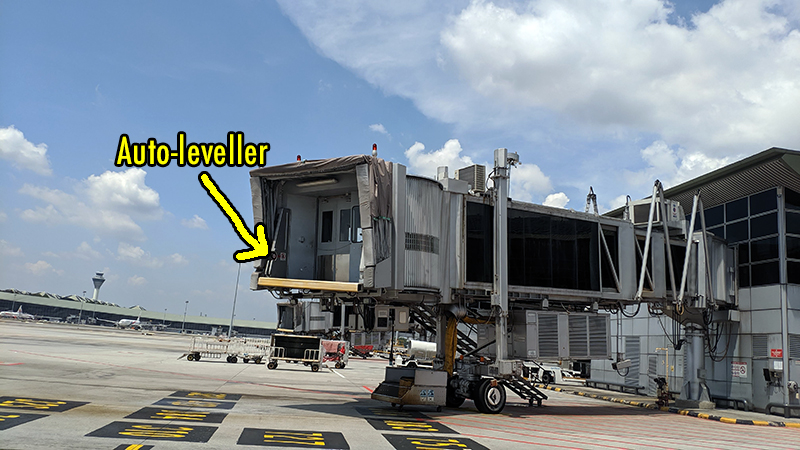
Do you recall that covered bridge thingy that connects the plane to the airport? Well it’s called an aerobridge (we never knew it had a name!) and it isn’t just there to make sure you don’t walk in the hot sun or heavy rain. The aerobridge is actually there because walking on the tarmac is a huge safety hazard, and there’s a risk of passengers colliding with airport vehicles or even planes (if you really wandered off) .
We asked Malaysia Airports if anyone had tried messing with the controls (since it looks so tempting) and they told us that the console is actually password-locked, and the aerobridge cannot be moved until the Operator retracts the auto-leveller—a device that measures the level of the plane and adjusts the aerobridge’s height to match it – because falling 2.7 meters isn’t the kind of trip travellers look forward to.
3. KLIA’s method of chasing birds out of the runway is surprisingly low tech...but it works!

Unfortunately there are no aerobridges for wildlife, and these will occasionally end up on the airport runway. Some of the wildlife appearing on the KLIA runways are birds, bees, monitor lizards, and snakes; while Malaysia Airports tells us that other airports have encountered tortoises and even a chicken egg (!!), which may answer the question of which came first.
Birds and other flying insects (like a swarm of bees) are the more common problems. Birds, for instance, can get sucked into the propellers of an aircraft and get disintegrated – although larger birds can bend or break the internal blades, causing potential power loss. If they happen to collide with the nose or body of the plane, the resulting dents can affect the aerodynamics of the plane or damage sensitive equipment such as the radar antenna.
Insects collisions aren’t as damaging as with birds, but the resulting mess can disrupt the airflow over the plane’s wings; which increases fuel consumption. There’s also a chance of the little critters getting stuck in the plane’s pitot probe, which makes the plane unable to measure wind velocity.
Prevention is the main part of keeping wildlife out, and there aren’t any gadgets for this…just common best practices like:
- Managing the grass, trees, and drainage in and around the airport
- Removing potential food sources (including the use of covered bins and aircraft waste chambers)
- Checking and repairing perimeter fences
- Removing wildlife roosting areas
But what we found amusing was how they keep the birds out, and that’s by hanging CDs. Yep, that thing that you see being done at nasi campur places? It actually works! However, the birds get used to it after a while, so the CDs are swapped with wind spinners and other distractors every few months.
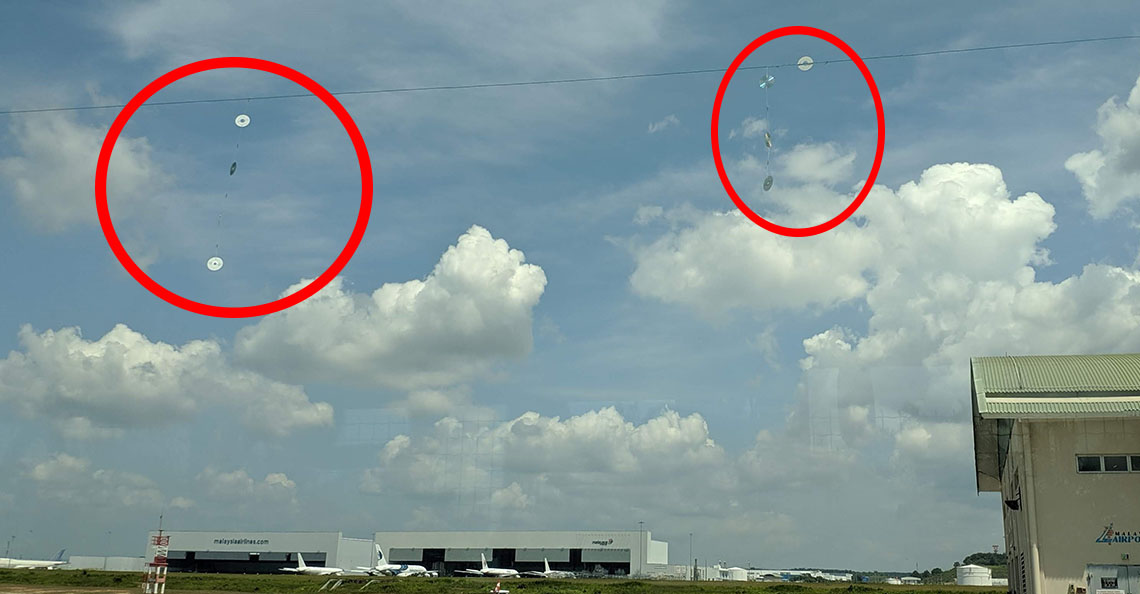
In the event that wildlife actually enters the area, KLIA has a Standard Operating Procedure (SOP) on Wildlife Hazard Management. This involves informing the Wildlife Department, who will then tell them how to remove and contain the animal without harming it. The animal is then handed over to the Wildlife Department for proper release.
When encountering such situations, the airline’s engineering personnel will remove the carcass of the animal and make a report to the airport. If the animal dies on the runway, its remains will be removed and the incident will be recorded.
Unfortunately, Malaysia Airports declined to comment on the fate of the chicken egg.
4. KLIA’s fire trucks aren’t your regular fire trucks
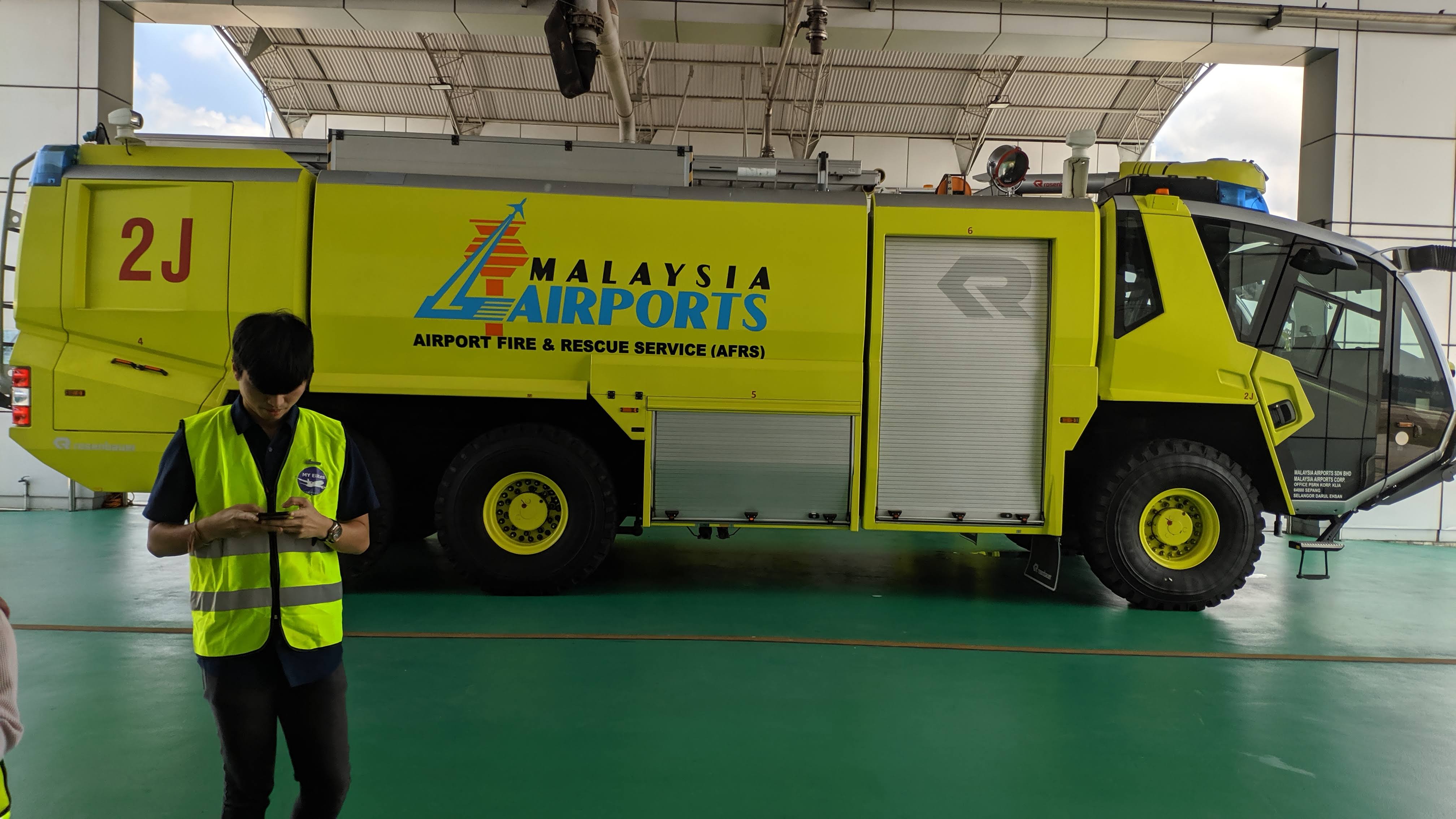
Basically, every airport needs to have an in-house fire and rescue service, and will not be allowed to operate without one. Section 33 of Civil Aviation Aerodrome Operation Regulation 2016 states:
Now, if you’ve played Red Alert, you’re probably thinking that the truck above looks like an undeployed Mobile Command Vehicle. What it actually is, is a fire truck. These things are specially built for airports and aircraft, and one of the highlights of it is the huge turret at the top that’s capable of piercing the body of a plane to extinguish any fires inside. Fun fact: the vehicles aren’t yellow for branding purposes—it’s actually because research has shown that red is actually less visible at night, and colors such as yellow and white actually reduce the chances of accidental collisions.
These fire trucks can store up to 12,000 litres in their tank, and shoot them out as fast as 5,000 litres/min. In comparison, the BOMBA trucks we usually see can only store up to 3,600 litres. In fact, the Airport Fire and Rescue Services (AFRS) team told us that, in some situations, fires can be completely put out without the firemen leaving the vehicle. Best part, we got to take a ride in one and see it in action.
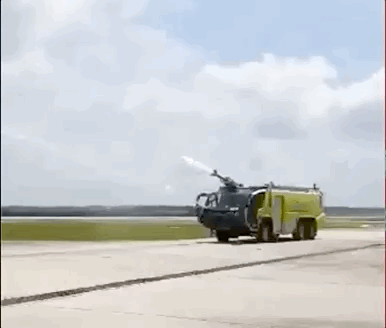
But all this equipment isn’t just there to impress. The AFRS in KLIA also has a bunch of requirements that they need to comply with, such as:
- Managing 3 fire stations (one on every runway)
- Keeping to a 3-minute response time in cases of emergency
- Provide 24/7 service
- Undergo weekly training in their training facility
AFRS also specially trains staff for airport emergencies. They don’t just have weekly training sessions, but also undergo annual competency tests called the Fuselage Mock-Up. AFRS ensures that staff are equipped with up-to-date knowledge on the different types of services provided by the department, as well as procedures for different types of planes.
Besides firetrucks, the AFRS also has two other vehicles – a hazmat (hazardous materials) containment unit, and a mobile command post.

Right truck: To hold meetings
During an emergency, all the top personnel from the various agencies will meet in the mobile command post, and be driven to the relevant area. There, they will be able to view what’s happening through a live feed from the AOCC (the CCTV camera guys) and engage directly with their personnel if needed. We asked off the record how much these vehicles cost, and suffice to say, any one of these are worth more than what the entire Asklegal staff can earn in a lifetime.
But what if there comes a time for passengers to protect themselves instead?
5. KLIA has safety and emergency kits throughout the airport
These are probably something that you’ll never really notice until you need one, and they’re actually strategically placed all over the main KLIA terminal, as well as klia2 (yeah, klia2 is a terminal, not a separate airport). However, before we get into the items in the picture, we’d like to start with something you’d never think of as a “safety feature” –
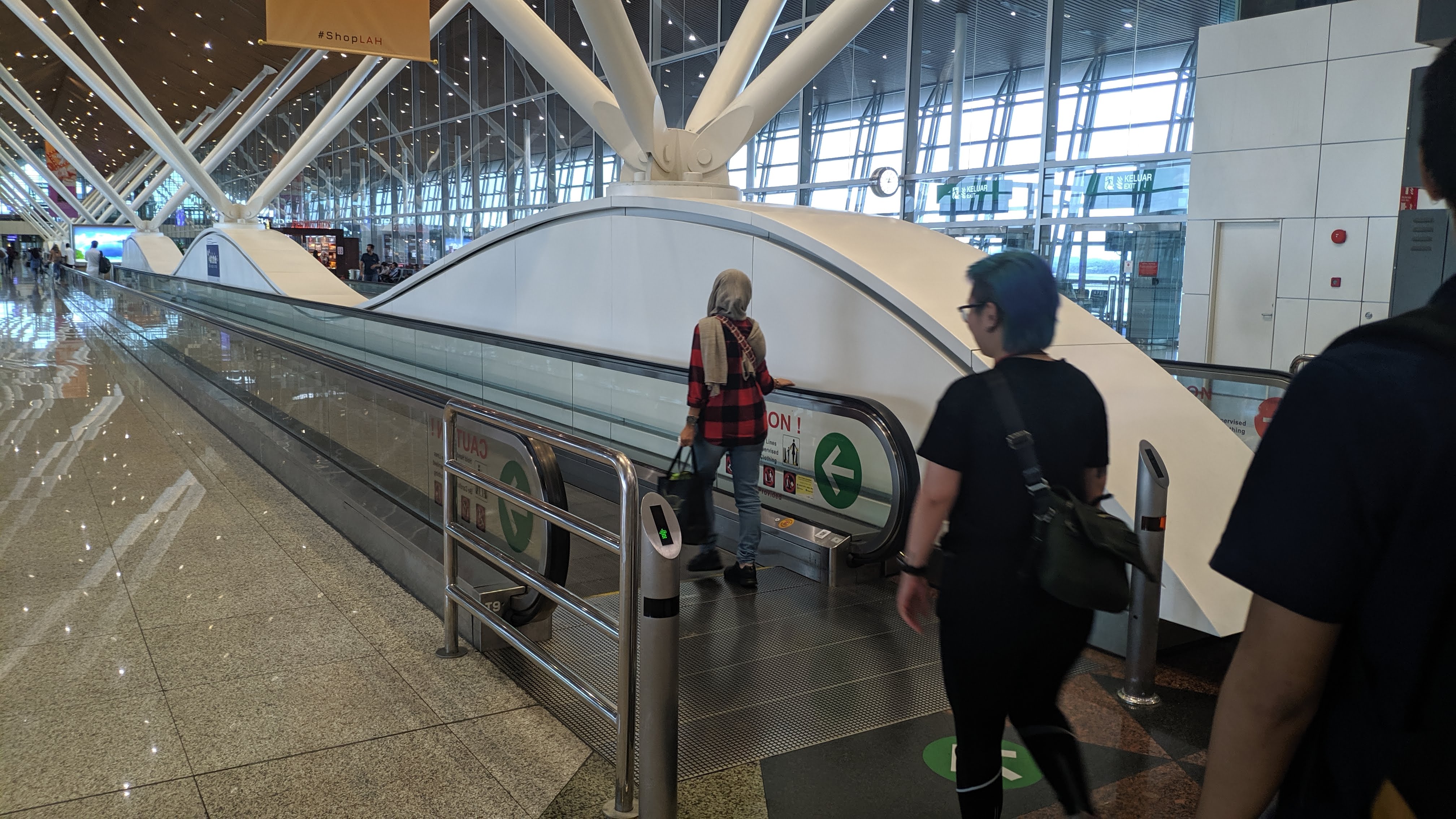
Walkalators are pretty much standard fixtures in airports nowadays, but have you ever wondered why we need what’s essentially a flat escalator?
For most people, it’s to solve the first world problem of having to walk a long distances while carrying luggage. For children, it’s something fun to race against. But for Malaysia Airports, it’s actually a safety precaution because walkalators are helpful for people with heart or other medical conditions that can be triggered by excessive walking. In fact, they inform us that the International Air Transport Association (IATA) has regulations that require walkalators be installed if passengers have to walk beyond an acceptable distance.
There are currently 67 walkalators in KLIA, and 42 in klia2.
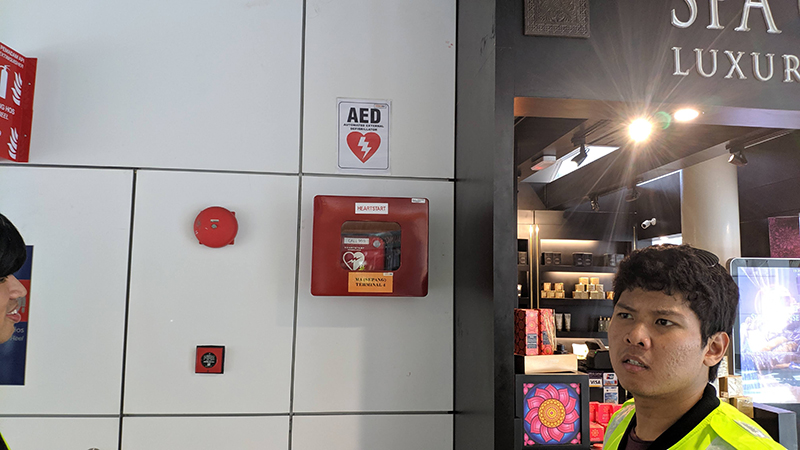
This device goes by many names: an AED, Defibrillator or a heart starter. If you play Left 4 Dead, it’s known as the “REZ ME PLEASE OMG!!!”
The AED’s main function is to restore a person’s heartbeat by delivering electric shocks directly to the heart, and is a literal lifesaver in medical emergencies and zombie attacks. In fact, one was used to resuscitate a passenger who had a heart attack in the KLIA main terminal.
But we have to say this now before you go on to try it the next time you’re at KLIA: The defibrillator is best used by someone with sufficient knowledge on how to use it, and the airport staff are trained to use it. The storage box itself is outfitted with a buzzer and strobe lights to prevent people from using it as a makeshift taser.
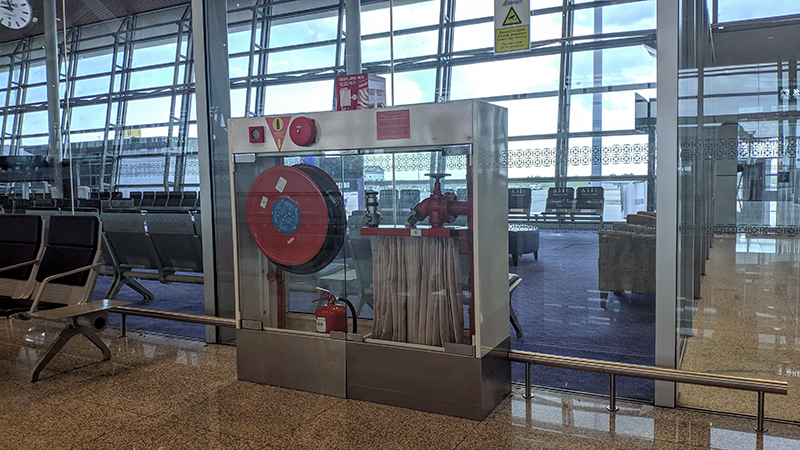
While the fire extinguishers meet the Fire Department (JBPM)’s guidelines to renew the safety certificates each year, the AFRS (airport fire guys from the point above) conduct daily inspections of each unit – basically having to inspect more than 2,000 fire extinguishers every day.
If you’d like to know how to use one, click here.
This article will be outdated by 2020.
Malaysia Airports is constantly upgrading their airports and, in our preliminary discussions before the tour even started, we were given some spoilers on upgrades that are coming to KLIA, which means that we’ll probably be arranging another tour in 2020.
One of these improvements are for body screenings, where the airport would soon be fully outfitted with body scanners to make screening more efficient and comfortable for travellers.
The body scanners will be using something called a ‘milimeter wave technology’ which is somewhat similar to taking pictures of passengers, and Artificial Intelligence is used to automatically mark the location of suspected contraband. Unlike metal detectors, body scanners can also detect non-metallic weapons, Improvised Explosive Devices (IEDs), and other explosives in liquid, gel, or powder form.
The best part is, the process only takes 2 seconds.
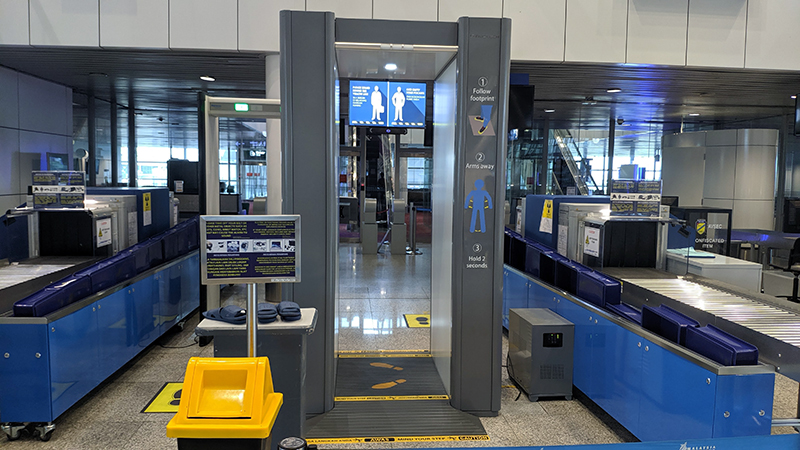
KLIA will soon be implementing something called a single token journey, where you’ll no longer be required to show your travel documents at every checkpoint. Instead, you’ll only need to show your documents and flight ticket once at the check-in counter and be issued a digital token which will then be used at all other checkpoints. Malaysia Airports says that it’ll take a passenger only 5-6 seconds to clear each checkpoint, which not only reduces the wait time but the queues as well.
And don’t worry about losing the digital token – it’s your face. All you need to do is to step up to the auto-gate and look into the lens of the camera. We were told that this technology will later be expanded to allow passengers to create tokens from their phones, so you can use it for check-in as well!
Not just that, as we have another update in 2020: KLIA 2 now has a new immigration arrival hall which is 2 times its previous size! There are approximately 58 counters opened with priority lanes for disabled passengers and families with young children. This will definitely reduce queuing time for passengers at the airport.
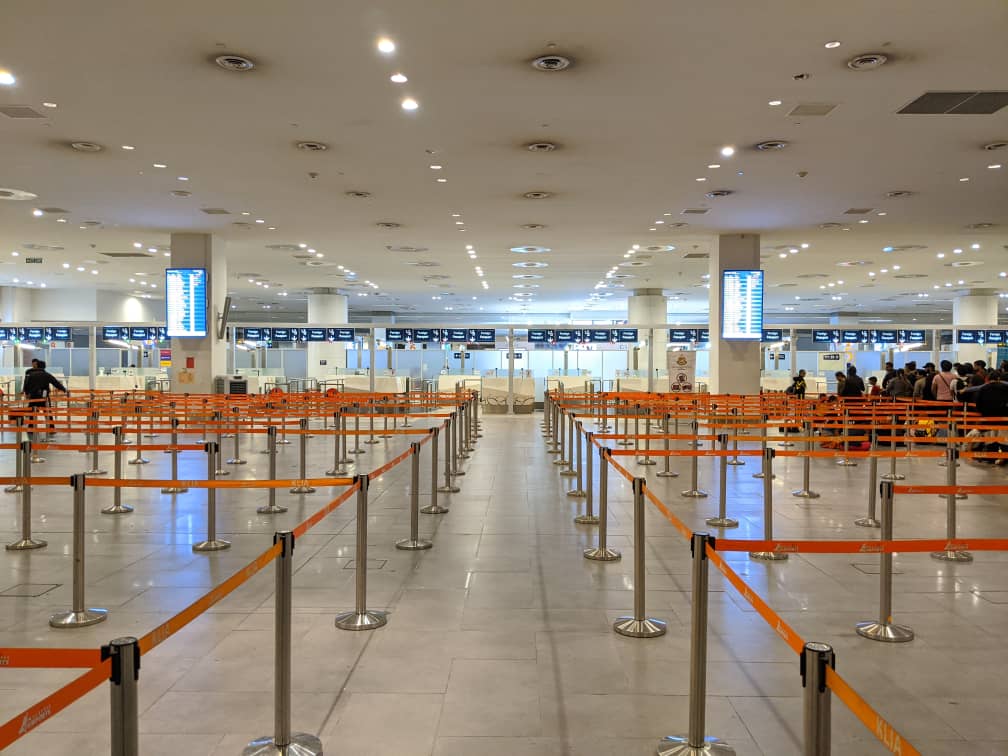
On top of all the tech and gadgets used to ensure the safety and security of the airport, there are also continuous training measures like full scale emergency/fire evacuation of the airport (that includes real passengers) and disaster scenario simulations. This is where any disaster scenario – fires, plane crashes, terrorism, etc—that could happen at an airport is recreated, complete with crisis actors. We won’t go into too many details here as it’s something that you’d need to see to fully understand…and you’re in luck! Our cousins at Cilisos have filmed a terrorist attack scenario at their latest practice session in Langkawi International Airport; and that video should be out pretty soon.
In essence, it’s actually quite mind-blowing to see the round-the-clock work that airports and the agencies that work with them put into ensuring that passengers are always kept as safe as possible without inconveniencing or scaring them. And we know there are many more measures, because these are only the ones that they allowed us to include in the article.